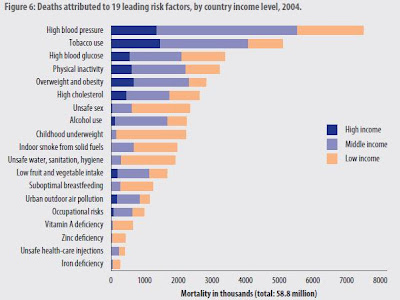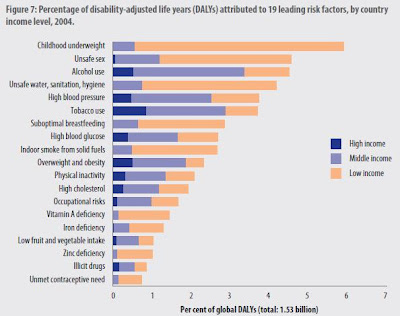A study of more than 300,000 nuclear-industry workers in France, the United States and the United Kingdom, all of whom wore dosimeter badges, has provided exactly these data. A consortium of researchers coordinated by the International Agency for Research on Cancer (IARC) in Lyon, France, examined causes of death in the workers (one-fifth of whom had died by the time of the study) and correlated this with exposure records, some of which went back 60 years.
There was an expectation that 134 of the workers (4.3 per 10,000 people) would die from leukaemia as a result of the average 27 years they spent in the industry; in fact, 531 people died from the disease. Even in this large study, there was no direct evidence that workers who had accumulated extremely low doses of radiation (below a total of 50 mSv) had an increased risk of leukaemia, says Olsen. But a mathematical extrapolation of the data suggests that each accumulation of 10 mSv of exposure raises a worker’s risk of leukaemia by 0.002%.
There is higher levels of background radiation beyond this nuclear worker study in many countries and regions and there has not been conclusive evidence of higher leukemia in those populations. There is also higher radiation exposure for all aviation pilots and stewardesses and there has not been a study showing increased leukemia deaths. The increased radiation exposure for those flying would correlate to their flight times.
The risks to energy workers is far higher for coal, oil and gas. Also, roofing is the 6th most dangerous profession.
The direct worker risks are higher for those other energy workers and does not include increased air pollution related diseases.
In context there is improving treatments being developed against leukemia such as gene therapy.
The annual fatality rate for oil and gas workers was 30.5 per 100,000 workers (404 fatalities) during 2003–2006, approximately seven times the rate for all workers (4.0 per 100,000 workers). Nearly half of all fatal injuries among these workers were attributed to highway motor-vehicle crashes and workers being struck by machinery or equipment.
So over 27 years then the oil and gas fatalities would be 715 more than the average workers for every 100,000 workers. Matching the 300,000 nuclear workers would be 2145 extra deaths for being an oil and gas worker from direct work related fatalities. This does not increase increased health risks from higher pollution exposure.
Coal mining deaths had been averaging about 10,000-20,000 per year up to about 2005. China had half or more of the coal mining deaths. China has improved its coal mining deaths to below 1000 per year. This does not count the deaths related to transportation of coal. Globally there is 8 billion tons of coal being produced each year. Moving this coal makes up 40% of rail transportation and a significant portion of truck transportation and of shipping. There is
In the year 2004, indoor air pollution from solid fuel use was responsible for almost 2 million deaths (3% of all deaths) and 2.7% of the global burden of disease (expressed in disability-adjusted life years, or DALYs*). This risk factor is the second largest environmental contributor to ill-health, behind the combination of unsafe water with poor sanitation. In low- and middle-income countries, 3.9% of all deaths are due to indoor air pollution.Worldwide, indoor smoke from solid fuel combustion causes about 21% of deaths from lower respiratory infections, 35% of deaths from chronic obstructive pulmonary disease and about 3% of deaths from lung cancer.
In the year 2004, outdoor air pollution in urban areas was responsible for almost 1.2 million deaths (2% of all deaths) and 0.6% of the global burden of disease. Transportation-related air pollution, which is a significant contributor to total urban air pollution, increases the risks of cardiopulmonary-related deaths and non-allergic respiratory disease. Some evidence supports an association of transportation-related air pollution with increased risks of lung cancer, myocardial infarction, increased inflammatory response and adverse pregnancy outcomes (e.g. premature birth and low birth weight).
Exposure to particulate matter, including metals, has been linked to a range of adverse health outcomes, including modest transient changes in the respiratory tract and impaired pulmonary function, increased risk of symptoms requiring emergency room or hospital treatment, and increased risk of death from cardiovascular and respiratory diseases or lung cancer. Particulate matter is estimated to cause about 8% of deaths from lung cancer, 5% of deaths from cardiopulmonary disease and about 3% of deaths from respiratory infections.
World Health Organization – Global Health Risks report from 2009 (70 pages)
Global Health Risks

Brian Wang is a Futurist Thought Leader and a popular Science blogger with 1 million readers per month. His blog Nextbigfuture.com is ranked #1 Science News Blog. It covers many disruptive technology and trends including Space, Robotics, Artificial Intelligence, Medicine, Anti-aging Biotechnology, and Nanotechnology.
Known for identifying cutting edge technologies, he is currently a Co-Founder of a startup and fundraiser for high potential early-stage companies. He is the Head of Research for Allocations for deep technology investments and an Angel Investor at Space Angels.
A frequent speaker at corporations, he has been a TEDx speaker, a Singularity University speaker and guest at numerous interviews for radio and podcasts. He is open to public speaking and advising engagements.






